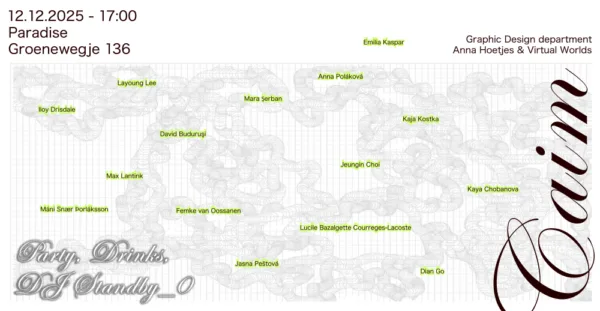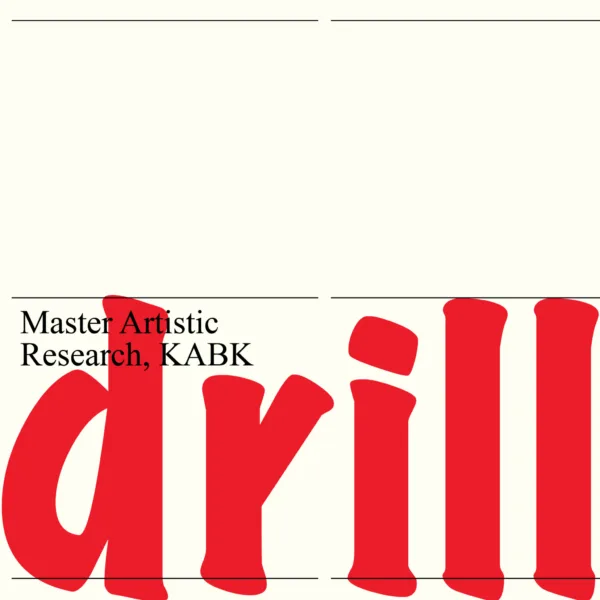00:05:59, an exhibition by first year students Master Photography and Society
First year students
When it is already 5 minutes past midnight to restore the damage done by dysfunctional ecological politics, we dedicate a pause to the art of listening and rethinking our course of action. By listening, sensing, and observing the marine ecosystem from the different angles of our situatedness, we glimpse the fragility of its existence and harness both informative and speculative ways of storytelling to express a shared concern. In this collective exhibition, the Doggerbank holds our individual researches together and is the starting point for our personal interactions with the more-than-human entities that inhabit or coexist within the North Sea.
Works on view:
Once We Floated in Waters Deep is an immersive video and sound installation featuring the fictional narrative of an ancient sea creature found at Zandmotor Beach, exploring the deep connection and relationship between human bodies and the ocean.
Under a sea that swallows is a cautionary tale that engages the voice of the atlantic eel and uses appropriated moving image and a human soundscape to surface the memories belonging to the once fertile, now submerged doggerland.
Sometimes things need to disappear completely to then reappear. That's why the project depicts The Sea vanishing through images that blur the line between reality and imagination, stressing the absurdity of our human-centric view.
Doggerbank Writes Back is a metaphorical journey to the boundaries of human reach, symbolizing the effort to bring natural history into the realm of human narrative. The work focuses on how we perceive ourselves in relation to more-than-human entities on a bureaucratic level.
Translating the memory of a non-human entity into something recognizable by the human brain, including feelings such as pain, loss, and traces of violence.
Marine mammals use echolocation, their primary sensory mechanism for detecting predators or prey, orienting themselves, and communicating with conspecifics in dark and murky underwater environments, but underwater noise pollution significantly impacts this crucial ability, akin to sensory loss like blindness in humans, profoundly affecting their survival and highlighting the importance of mitigating anthropogenic noise to protect these sensitive creatures.
How can we start to form a practice of care with biodiversity from the places we do have access to? Through the observation of the challenges and changes that contribute to a region's vulnerabilities.
Unfixing the Horizon transforms natural events like sunsets into multi-sensory experiences using technology, challenging traditional boundaries between nature and technology by converting visual phenomena into data, sounds, and tactile objects to foster a deeper understanding of their interconnectedness.
Compulsion on Creation highlights the obsession with creating, transforming an intended dialogue into a monologue and starkly illuminating humanity's exploitation of nature for personal gain.
The accumulation of foam on coastal areas is a consequence of eutrophication in the North Sea and represents a threat for the marine environment, not only for it depletes the sea of its dissolved oxygen but also having proved deadly for humans in past accidents. The project builds on the idea of suffocation of bodies of water and blurs the boundary between human and more-than-human breath.
At the Place Where Waves Are Now Rolling explores the remnants of Doggerland through its visible traces —fossils, bones, artefacts, and various objects— by documenting the stories, experiences and knowledge of fossil enthusiasts, all met at a particular location, De Zandmotor beach near The Hague.
Details
Date
Location
More info
Opening: June 8, 17.00 - 19.00 (walk-in from 16.00)
Opening hours
Sunday 9 June: 11.00 - 20.00
Monday 10 - Wednesday 12 June: 16.00 - 20.00
Thursday 13 June: 16.00 - 21.20







